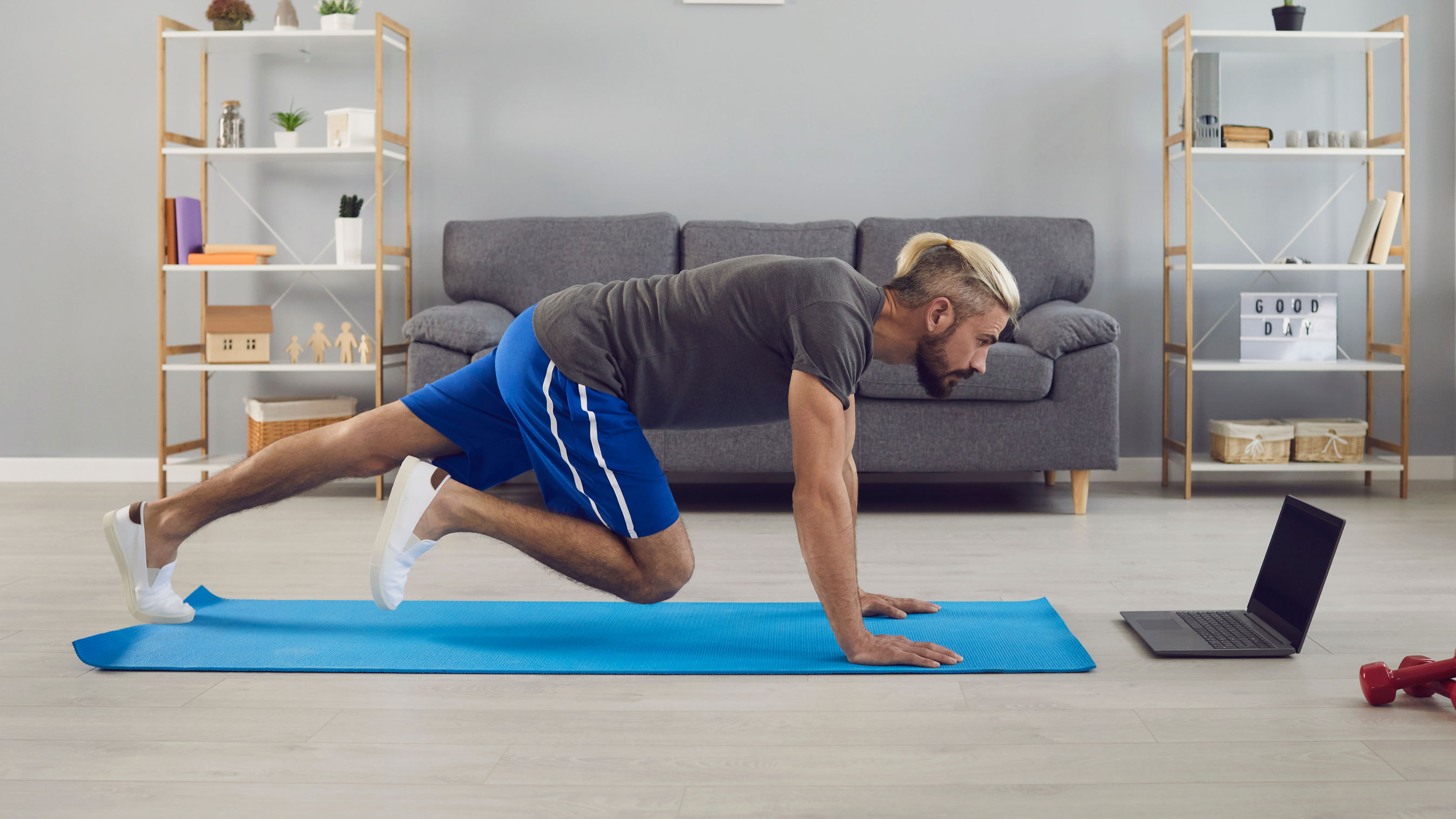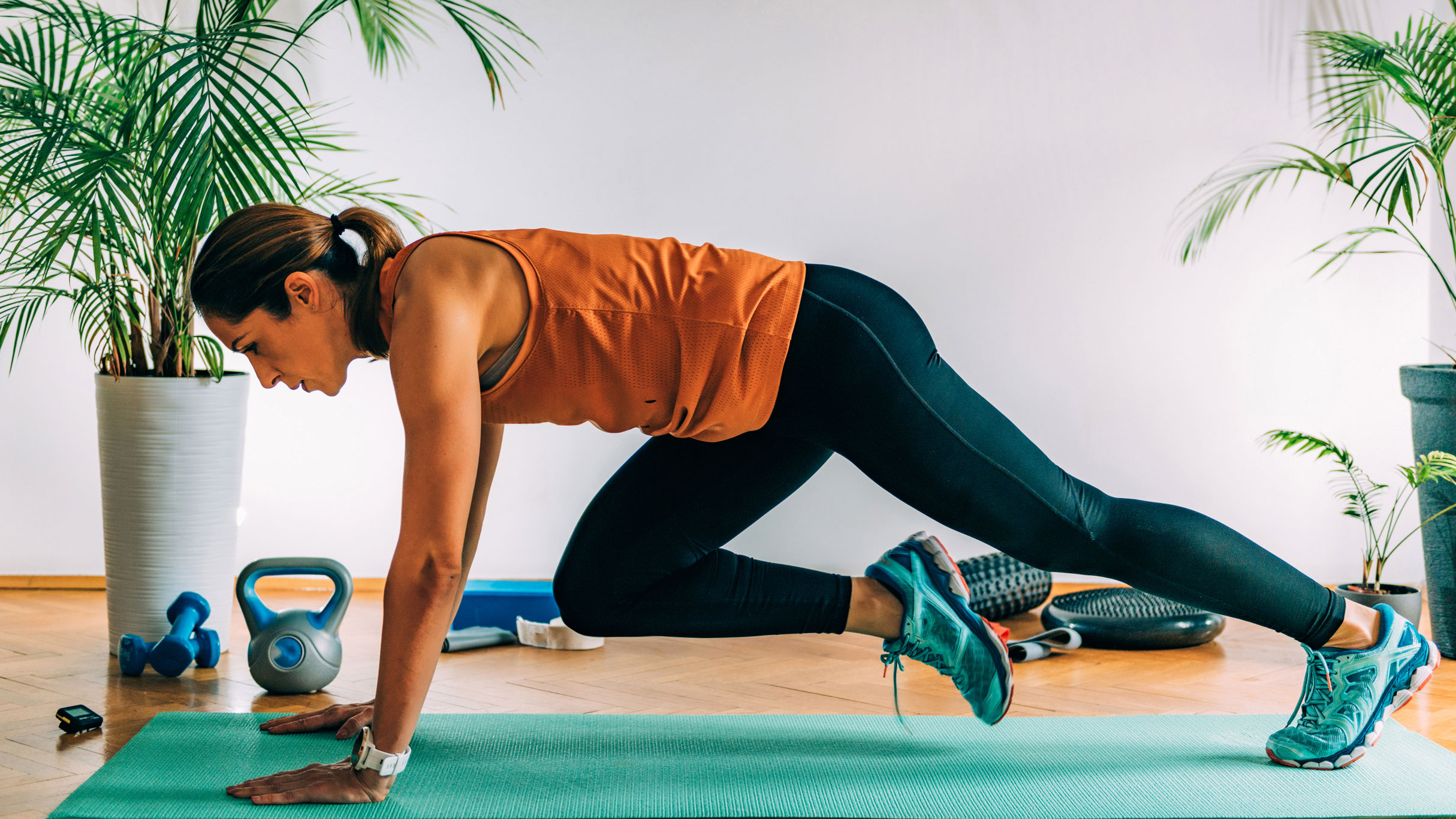I did 100 mountain climbers every day for a week: Here are four things I learned
Mountain climbers had a big impact on my core strength in just a week

Mountain climbers are proven to be a great way to improve core strength, as well as add definition to upper body muscles.
And yet, in all my time working out over the last decade or so, I could probably count on one hand the number of times I've attempted them. Never one to focus on abs, I was challenged by TechRadar’s fitness editor to integrate them into a week’s worth of exercise.
Never one to turn down a challenge, I set about working through 100 mountain climbers each day. To set expectations, for the most part, these were split between two or three sets, with a total of fifty on each side.
That’s combined with a rough bodybuilding routine with four full-body workouts. The nice thing about mountain climbers is that they require no equipment whatsoever, so if you're strapping on your best running shoes or heading to the gym, you can bookend your workout with quick bodyweight exercises. Here’s what happened when I added one hundred mountain climbers a day to my routine, no mountains required.
How to do mountain climbers
1. Small visual changes
It’s highly unlikely you’ll see visual changes in a week, but I may have convinced myself something has changed.
I found that my rectus abdominis (top abs) were a little more defined, and actually protruded out from my sternum a little. As a large man with a barrel chest, that felt surprising, but they definitely feel more toned to the touch.
I also found my obliques were a smidge more defined, although this could also be due to eating less during a heatwave. In any case, consistent results are likely to follow if I keep it up, but the old adage “abs are made in the kitchen” (with recipes like our crispy air fryer chickpeas, of course) means it’ll take more than mountain climbers daily to help get those abs showing.
Get daily insight, inspiration and deals in your inbox
Sign up for breaking news, reviews, opinion, top tech deals, and more.
2. Improved weightlifting base
As I mentioned earlier, I enjoy lifting weights. This is primarily due to the way I can “gamify” things in the same way the best Apple Watch does with Movement and Exercise ring achievements or Peloton's Lanebreak game. New PBs and increasing weights feel a little like leveling up.
To stick with that analogy, I found my regular mountain climbers began to feel a little like a cheat code for a couple of exercises in particular.
For one, standing dumbbell shoulder press felt more secure, like I had a sturdier base to lift from. Those obliques undoubtedly factored in to help me push upwards, but I also felt like I had a stronger core to help lower the weights more carefully, too.
On the other hand, I found those obliques felt more engaged during a dumbbell row on a standard bench. Leaning forward, I was able to feel my core tightening just a little more as I lifted on each side, and it acted as a good barometer of how much I could lift as the set went on - as that side started to ache, I knew I was approaching my maximum rep count. That sounds obvious, but having another way of telling when I was near the end was appreciated.
3. Better cardiovascular health
This is likely to affect everyone differently, but during the current hot weather I’ve opted to avoid running, or any cardio, really. This is because I have bradycardia, meaning my heart beats slower than it should.
A big part of that is likely the amount of exercise I do, and while many will strive to get their heart rate lower, I was pleased to see my regular daily mountain climbers actually brought my resting heart rate up to a respectable 42 to 43 BPM according to my best smartwatch.
Given I’d previously been in the high thirties, that’s a solid jump, and one that may keep me going even once this very article is submitted.

4. It makes other ab workouts easier
Of course, one of the reasons we as humans enjoy working out is to measure how far we’ve come, and I did find that mountain climbers helped make other exercises that target abs more than a little easier.
I found the increased core strength helped with crunches, sit-ups, and leg pull-ins - three workouts that work the middle of the abs (mountain climbers feel more geared towards the upper and lower abdominals).
It should be noted, though, that what worked for me may not work for you. With that in mind, I should note that there was increased discomfort when tacking on one hundred mountain climbers to an already ab-centric day - proceed with caution.
The big question: Will I keep it up?
I was impressed by not only how useful mountain climbers were, but also how much I grew to enjoy them. The more I did, the faster I got, and I can see myself returning to them now that I can blitz through them in a few minutes.
It’s likely not the kind of thing I can find time for daily, with work, family, and more to juggle, but I can see myself setting aside time to add a few to my week, perhaps every other day.

Lloyd Coombes is a freelance tech and fitness writer for TechRadar. He's an expert in all things Apple as well as Computer and Gaming tech, with previous works published on TopTenReviews, Space.com, and Live Science. You'll find him regularly testing the latest MacBook or iPhone, but he spends most of his time writing about video games at Dexerto.